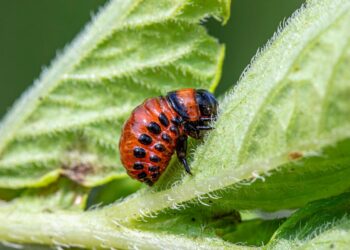Top Tips to Prevent and Treat Garden Fungal Infections
Gardens are not just about verdant beauty and bounty; they’re also a battleground for plant health, especially when it comes to fungal infections. These infections can decimate plants, but with the right knowledge and actions, you can both prevent and combat these pesky intruders. This guide provides you with essential tips to keep your garden flourishing free of fungal foes.
Understanding Garden Fungal Infections
Fungal infections arise from microscopic organisms in the soil, air, or water, which attach to plants and disrupt their normal functions. Common symptoms include unusual spots on leaves, stunted growth, and rotting. Recognizing these signs early can be the key to saving your plants.
FAQ: What are some common garden fungal diseases?
Common fungal diseases include powdery mildew, botrytis (gray mold), rust, and black spot. Each affects the plants in different ways but generally leads to weakened plants and reduced productivity.
Prevention Strategies
Preventing fungal infections is more manageable and less costly than treating them. Here are some strategies to help keep your garden healthy:
1. Choose Resistant Varieties
When planning your garden, opt for plant varieties that are resistant to fungal diseases. These are often bred specifically to withstand common pathogens. Your local garden center or cooperative extension can recommend the best choices for your area.
2. Proper Plant Spacing
Avoid overcrowding your plants. Proper spacing helps improve air circulation around the plants, reducing the humidity and wetness that foster fungal growth.
3. Water Wisely
Water your plants at the base, not the foliage. Wet leaves can lead to fungal diseases. Also, watering in the morning helps ensure that foliage dries before nightfall. Utilize drip irrigation or soaker hoses to keep water off the leaves and direct it to where it’s most needed — the roots.
4. Maintain Garden Cleanliness
Regularly remove dead or infected leaves and debris from your garden. These can harbor fungi, which can spread to healthy plants. A clean garden is a less hospitable place for fungal pathogens.
5. Rotate Crops
Don’t plant the same crop in the same spot year after year. Crop rotation helps prevent fungi that may linger in the soil from reinfecting the same type of plants annually.
Treatment Tactics
If prevention fails, you need to act swiftly to treat affected plants and prevent the spread of disease. Here’s what you can do:
1. Remove Affected Plant Parts
At the first sign of infection, prune and dispose of any affected parts of plants. This might involve picking off infected leaves or cutting out infected sections of the plant.
2. Use Fungicides Safely
Fungicides can be effective in controlling garden fungal diseases. However, they should be used as a last resort and in accordance with the manufacturer’s instructions. Opt for organic or natural fungicides when possible to decrease environmental impact.
3. Adjust Your Gardening Practices
If a fungal disease has appeared, it’s time to review and adjust your gardening practices. Consider increasing plant spacing, improving soil drainage, or adjusting your watering routines to help combat the problem.
4. Strengthen Plants Through Nutrition
Ensure your plants are getting the right nutrients to fight infections. A well-balanced fertilizer appropriate for your plants can boost their natural immune systems and help them recover from or ward off fungal diseases.
In Conclusion
Garden fungal infections are a serious concern but armed with the right knowledge on prevention and treatment, gardeners can enjoy lush, healthy gardens. Remember, the healthiest gardens are those that are well planned, diligently cared for, and regularly monitored. By implementing the strategies outlined above, you can maintain a vigorous garden that is less susceptible to fungal woes.
Start Today!
Whether you’re a beginner or an experienced gardener, tackling garden health proactively can seem overwhelming, but it’s essential for the longevity and beauty of your plant life. Start implementing these practices today, and watch your garden thrive season after season.




















































